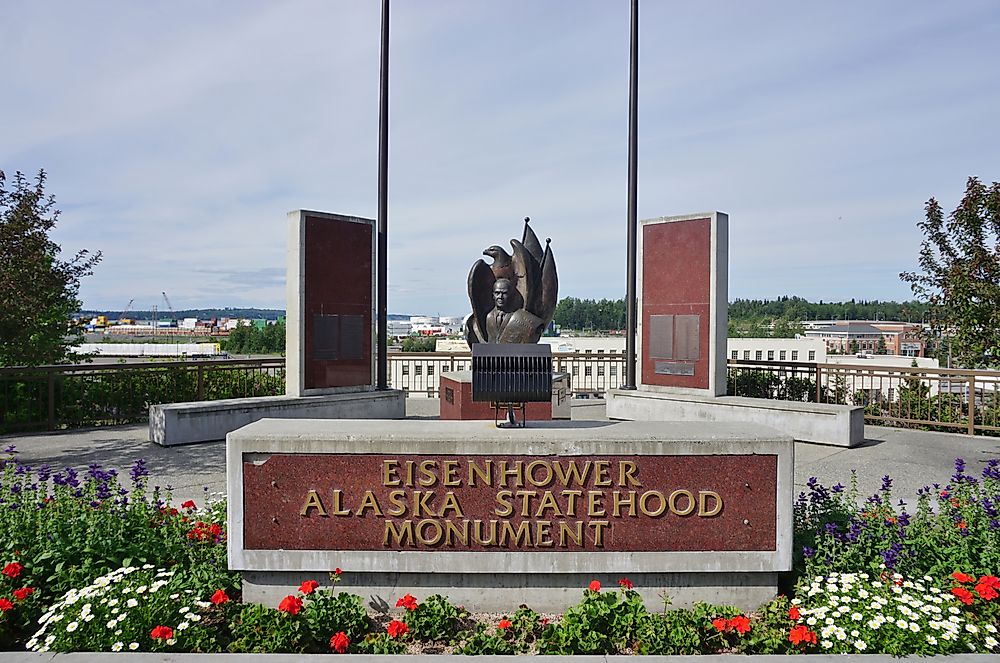Who Was the First President of All 50 States?

Before the Second World War, the United States was a 48 state nation with some territories including Alaska and Hawaii. The United States purchased Alaska from Russia in 1867 while Hawaii was a republic which ceded itself to the United States. Both these territories attained statehood in 1959 (with Hawaii being the last to gain statehood on August 21, 1951) thus making Dwight Eisenhower the first American President to preside over the fifty states.
Who was Dwight Eisenhower?
Dwight is the thirty-fourth American presidents who served from 1953 to 1961. He was the first American leader to be bounded by the twenty-second amendment which stipulates the number of times a president can be elected to the office. Eisenhower was also the first American leader to enjoy the benefits of the Former-Presidential Act which stipulates that an outgoing president is entitled to receive secret service detail, pension, and government-provided staff as long as he is alive.
Early Life of Eisenhower
Although he grew up in Kansas, Dwight was born in Texas on October 14, 1890. He attended the Abilene high school where he graduated in 1909. While in college Dwight injured his leg and the infection extended to his groin. The doctors wanted to amputate his leg, but he refused. Dwight recovered from the injury and resumed his education. Dwight and his brother wanted a college degree, so they agreed to alternate the college years while the other was working to earn the tuitions. Edgar (his brother) was the first to go to school, and Dwight had to work at the Belle-Springs creamery. Dwight later joined west point naval academy in 1911 where there was no tuition. He graduated in 1915.
Eisenhower’s Life Before presidency
After finishing the naval academy, he was sent to the Fort Sam Houston base. While at Sam Houston Base, Dwight married Mamie Doud on July 1, 1916. Dwight and Mamie were blessed with two children, but their son Doud Dwight died at age 3. He met George Patton at the Meade camp in Maryland, and together they published various articles advocating for the military to use the tanks and avoid the repeat of the destructive trench-warfare used in the World War 1. The military considered this insubordination, and they threatened him with court-martial if he wrote the articles again.
Dwight played a crucial role in the field maneuvers of the third army in Louisiana, and this revealed his talent in strategic planning. Dwight went to work on the military’s war plans in Washington, D.C. after the Pearl Harbor was attacked. After this contribution to the war plans, crucial assignments and promotions followed. Dwight commanded the troops which attacked North Africa in 1942. Dwight also directed the attacks of Italy and Sicily. He launched the Normandy’s D-day invasion on June 6, 1944, and his decision to continue with the invasion despite the poor weather won him admiration from all the troops and allied leaders.
After the Second World War, Dwight became the Army’s chief of staff a position he served for two years. After retiring from this post, he wrote the "Crusade in Europe" his famous wartime memoir. In 1948, Eisenhower was the president of the Colombia University in 1948, but he had to take a leave of absence in 1950 to work with North-Atlantic Treaty Organization (NATO).
Eisenhower's Presidency and Death
After being pressed by President Truman to be the Democrat’s presidential candidate, he finally voiced his disagreement with the party and declared himself a Republican. Eisenhower chose Richard Nixon as his vice president, and they won the 1952 presidential elections. President Eisenhower was the last American leader born during the 19th century. He was also the oldest president ever elected since President Buchanan. Until Donald Trump, he was the only recent head of state who had never held an elected office before becoming a president.
He passed away on March 28, 1969, after suffering from a heart problem. After the Episcopal Church service at the National Cathedral on March 31, 1969, his body was carried by train to Kansas where he was buried; this was the last time a funeral train was used in the burial proceedings of a United States president.











